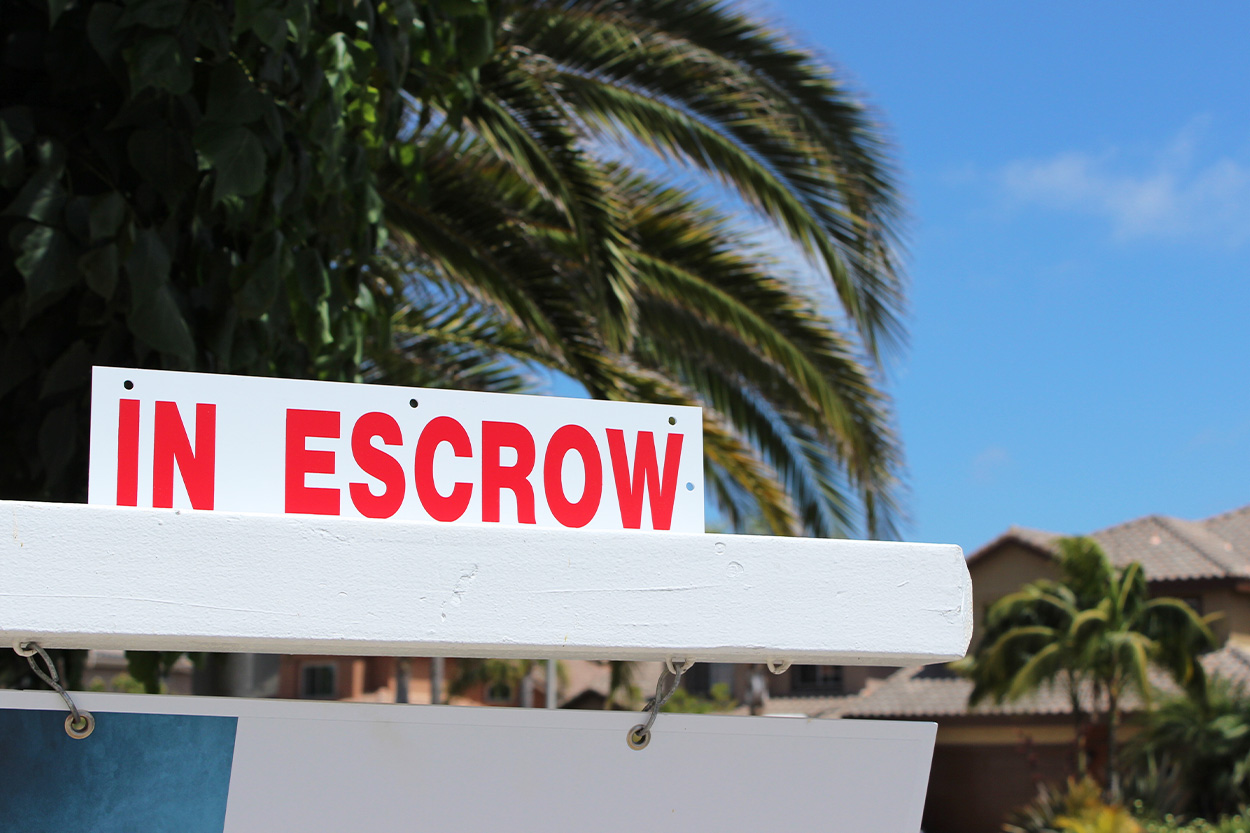Escrow Accounts: Everything You Need to Know

Typically, when you buy a home you will need to put earnest money into an escrow account until the sale has officially closed. An escrow account is like a bank account.
Once the sale has closed, your lender will deposit a portion of your monthly mortgage payment into this escrow account cover the annual costs of homeowner’s insurance and property taxes.
Key takeaways
- An escrow account is similar to a bank account where home buyers place their earnest money deposit and is later used to hold a portion of their mortgage payments to cover annual property taxes and home insurance bills.
- To determine how much money goes into an escrow account each month, lenders use an estimate of your annual property taxes and insurance bills divided by 12 months.
- Every year, homeowners will receive an escrow statement that shows whether they owe more money for taxes and insurance or will be refunded money.
What is an escrow account?

An escrow account is opened when you deposit your earnest money when purchasing a home. When a buyer and seller enter into a purchase agreement, and the seller takes their home off the market, the buyer will put down earnest money as a sign of their commitment to buy the home. Because the closing process can take several days or even weeks, putting an earnest money deposit down can protect the seller in case the sale falls through.
If for some reason the buyer decides to not proceed with the sale (not due to any contingencies), then the seller will likely keep the earnest money. If the purchase falls through due to contingencies like a home inspections or financing, then the money will be returned to the buyer. If the purchase goes according to plan and the buyer closes on the house as expected, then the earnest money will be applied toward the buyer’s down payment or closing costs.
In order to ensure that neither the buyer nor seller is getting preferential treatment, earnest money deposits are placed in an escrow account and supervised by a neutral third-party escrow agent.
After your sale has successfully closed, your lender will begin collecting your monthly mortgage payments, and placing a part of those payments in an escrow account until your property tax and homeowner’s insurance payments are due. Though these bills are typically paid annually, your lender will collect them little by little every month to ensure that they get paid on time and in full every year. This way, there is less risk.
Do you need an escrow account?
Certain loans will require you to set up an escrow account no matter what – like FHA loans, for example. You may also need to set up an escrow account if you make a down payment smaller than 20%. Once you have established enough equity and have a good history of on-time payments, you might be able to get rid of your escrow account.
How are escrow payments determined?
Your lender determines the amount of money that they will collect for your monthly escrow payments by adding up the estimated annual property taxes and homeowner’s insurance and dividing that total by 12 months. So, if your property taxes cost $3,000 per year, and your homeowner’s insurance costs $1,000 per year, then their combined annual amount would be $4,000 and their monthly amount would be $333. This amount is then added to your monthly mortgage principal and interest payment. If your 30-year loan is a for a $350,000 home at an interest rate of 2.8%, with a monthly principal of $621 and a monthly interest payment of $817, then your total monthly payments including the principal ($621), interest ($817), taxes ($250), and insurance ($83) would be $1,771.
How much can a lender keep in escrow?

During the closing process, you will likely need to put down 1% to 3% of the sales price into escrow account as earnest money. So, for a $350,000 house, that would be anywhere from $3,500 to $10,500.
After closing, the amount of money that your lender places in escrow may vary because your taxes and insurance bills can change annually. However, under laws enforced by the Real Estate Settlement Procedures Act, your lender has a maximum amount of money that they can collect for your escrow account – your annual insurance and tax bills, plus two monthly payments of insurance and taxes, plus $50.
Again, if your property taxes cost $3,000 per year, and your homeowner’s insurance costs $1,000 per year, then the maximum amount of money that your lender could collect for your escrow account would be $4,000, plus $666, plus $50 – totaling at $4,716.
What is a yearly escrow analysis?
Every year, your lender will review your escrow account and make sure that they are not collecting too much or too little money. They will also provide an escrow account statement for your review. Typically, each statement will have the same sections of information. At the top of your statement, you will have information like your account number, the date the statement was processed, your principal balance, your property address, and other relevant information. You will also see the amount of money your lender has collected for your homeowner’s insurance and property taxes, the estimated amount they will have to pay for each of those bills, and when those annual bills are due. A following section will say whether your lender has collected too much or too little from you to pay your annual taxes and insurance bills. The statement should also detail how much you will get refunded or need to pay, your current escrow account balance, and your payment history.
What happens if there is an escrow surplus or shortage?
Reviewing your escrow statement is important because you need to be financially prepared if your lender calculates an escrow shortage. The amount of monthly escrow payments that your lender collects is based on an estimate of your property taxes and insurance. However, your property taxes could go up throughout the year, or your property could be assessed for a higher value than when you bought the home. Then, you will have an escrow shortage at the end of the year, and your lender will be required to collect more money to meet the annual dues for these bills. If you are worried about an escrow shortage being a potential financial issue, then you may be able to put more into your escrow account than needed every month.
Using escrow accounts moving forward
If you are in the process of buying a home, you likely have already deposited money into an escrow account. If you have not yet deposited money into in account, your next step will be to enter into a purchase agreement and determine how much you need to put into escrow. Then, you will deposit money into the third-party account. Once you have closed, your lender will likely create an escrow account if you put less than 20% down on your home or are financing your home with a certain type of loan, like an FHA Loan. Every month, your lender will collect payments to fund your annual homeowners’ insurance and property tax fees, which will be held in your escrow account until they are due.
If you already have an escrow account, and want to know why you have it, contact us and we will be happy to let you know!






